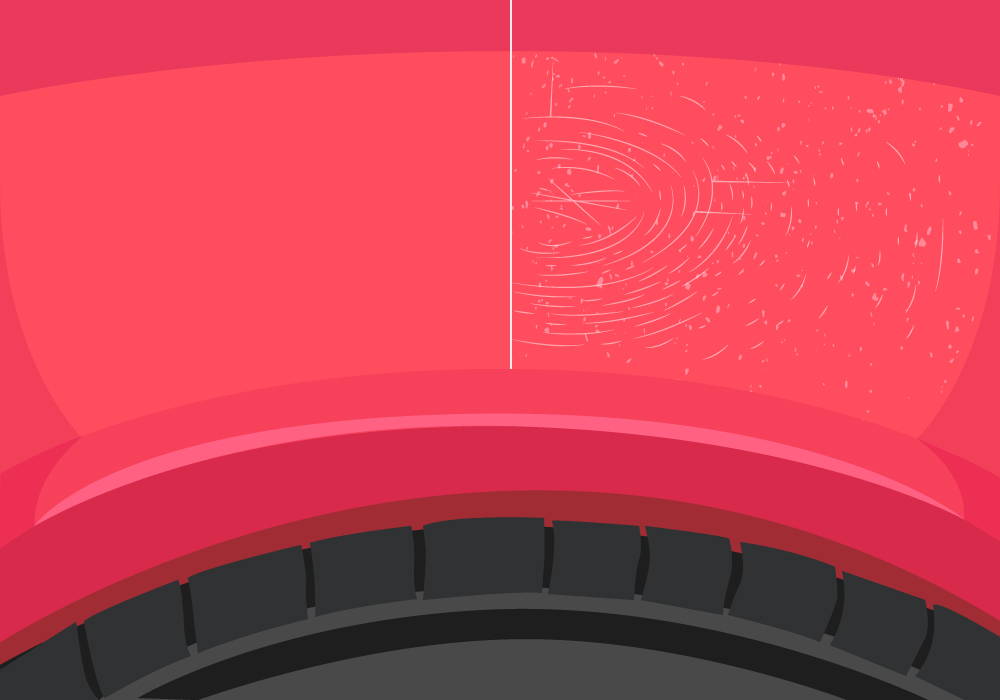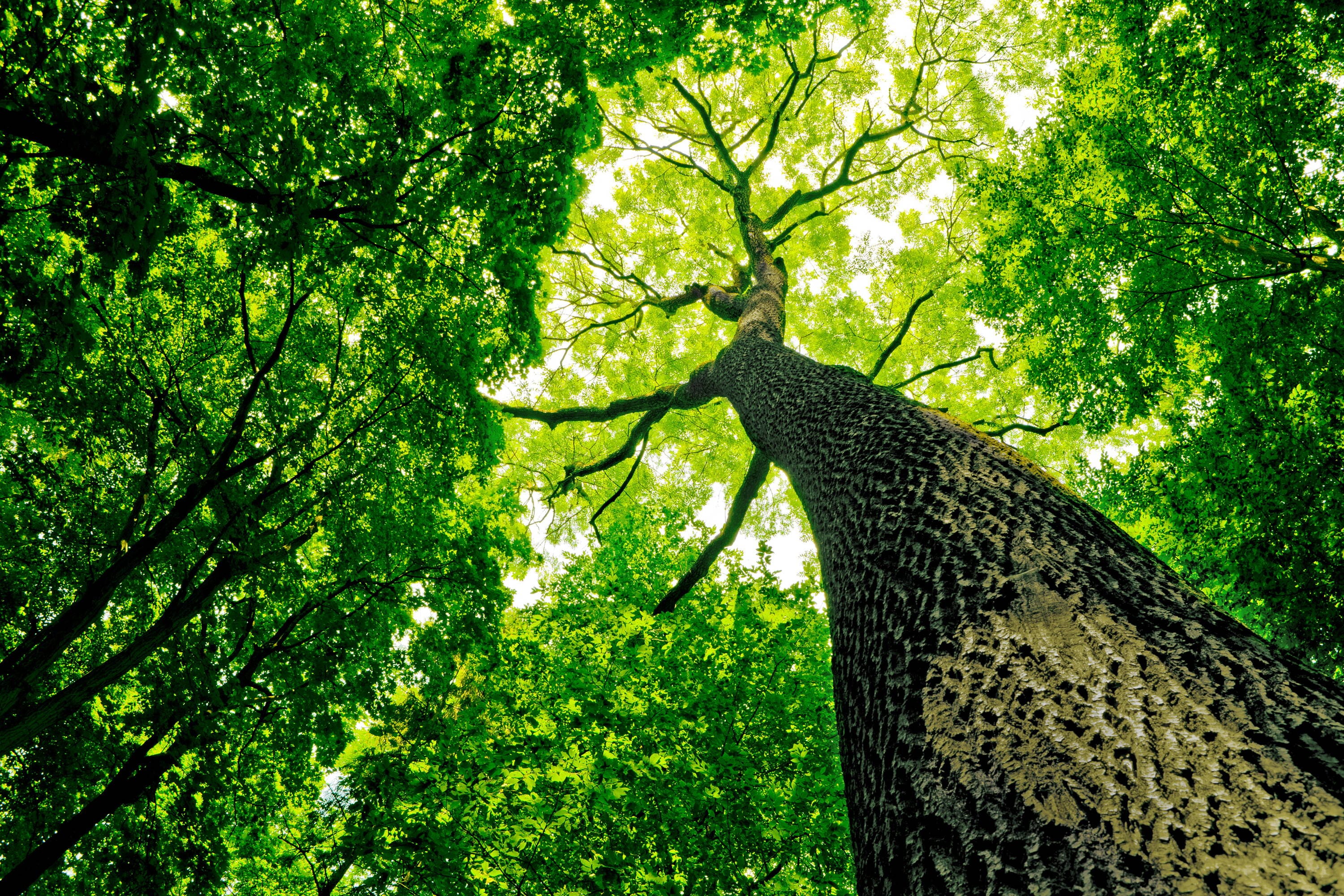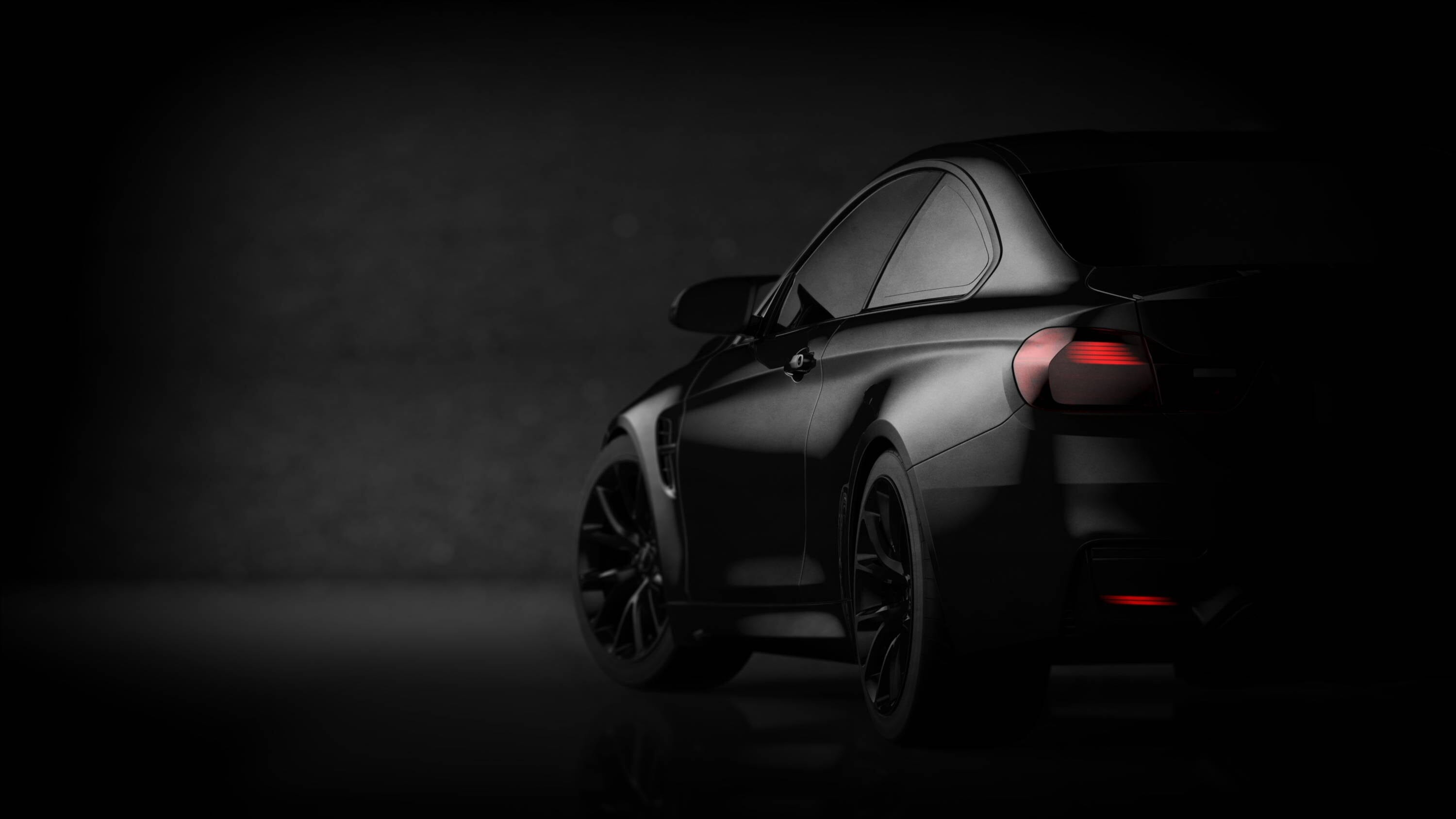There’s nothing like owning a black car in the Southwest or Florida… you can just look at it and it’ll get water stains.
If your paint still looks like the lunar surface after you’ve just washed it, you’ve got a bad case of hard water. This ruins the paint of your car and is a pain in the ass to deal with.
Depending on where you live, hard water and acid rain will chew your paint any chance they get.
You want the paint to last a long time, but you also don’t want a second job cleaning the car every 15 minutes. Stick with us and by the end of this article, you’ll be an absolute pro in dealing with water stains of any kind.
What Are Water Spots And How Can I Identify Them?
Water spots are traces of minerals, salts, acids, or other contamination that have been dissolved in water and deposited onto the surface of your car as that water has evaporated and dried naturally.
Water is never just water.
It’s one of the best solvents out there. It’s great at dissolving calcium and magnesium carbonates from the nearby rock, CO2, and acids from industrial emissions and volcanic activity, lead, and other metals from environmental pollution.
These will remain in the liquid water unless it’s evaporated or treated to remove them. Eventually, they will end up on your car through washing with hard water or acidic rainfall.
If you leave your vehicle out to dry in the sun, off-white powdery spots will appear, and you’d be wise to act fast and remove these before they have a chance to damage the paint of your vehicle.
Types Of Water Stains/Spots
Depending on the constitution of your local water supply, there are two main types of water stains, both of which are harmful to the paint of your vehicle to varying degrees.
Mineral Deposits From Hard Water
The hardness of water is a measurement of how many minerals are dissolved in it. Water is considered hard if it has a pH level above 7, which is pure distilled water.
If there’s a lot of calcium and magnesium-rich rock in your area, rainfall will naturally pick some of it up on its way to the underground water system.
As it’s brought into the plumbing system, the hard water will deposit minerals onto each surface it touches, including the car you just washed with your garden hose.
You can have an M3, an S-Class, an Escalade, it doesn’t matter… - wash it with hard water and leave it in the sun to dry, and you will absolutely bake yourself a cake with calcium frosting.
As the water evaporates, the minerals - mostly in the form of calcium carbonate, otherwise known as CaCO3 - remain behind and accumulate on the surface. They lodge themselves tightly into the microscopic texture of the clear coat and solidify into a chalk-like powdery material that’s off-white and rough to the touch.
These minerals are not toxic. However, they do shorten the lifespan of every machine exposed to them, including the paint of your car.
Industrial plants and water utility companies treat groundwater to keep the mineral contents within reasonable limits. However, depending on where you live, it may not be enough to keep hard water at bay.
Chemical Etching From Acid Rain
Rain is always somewhat acidic because it naturally dissolves carbon dioxide, or CO2, from the atmosphere, which falls down in weak carbonic acid form with a pH level of around 5.0-5.5.
Any acid, no matter how weak, will deteriorate the paint of your car if your vehicle is left to sit outside indefinitely. Usually, rainfall isn’t too bad as long as you wash your car regularly.
However, if you live near an industrial area with a lot of carbon dioxide and nitrogen oxide emissions, the rain can become more acidic.
Strong volcanic activity can eject high amounts of sulfur dioxide, or SO2, and other acidic gasses into the atmosphere, also causing acid rain.
Whatever the reason, rainfall can bring a significant amount of acids down to the surface, including on your car parked in the street.
Are Water Spots Harmful To Paint?
Absolutely!
As calcium carbonate accumulates on the body panels, dust, dirt, and other contamination from the road will stick to it, stacking up and slowly deteriorating the paint.
Acids are corrosive to the paint of your car. If you experience more acidic rain and leave your car to dry in the air, the acids can etch little dimples into the clear coat. This effect will worsen over time as water pools into the cavities and digs into the same spots, eventually compromising the paint entirely.
Acid rain and hard water are even worse when combined.
Calcium carbonate is a base, meaning it will react with acid rain, or even normal rain to form salts, which are every bit as corrosive to the paint, metal, and pretty much everything else making up your car’s surface.
Even worse, the more acidic the rain, the harder the water gets as it dissolves more calcium and magnesium from the rock.
It’s a vicious circle - and it will certainly ruin the paint of your car in just a few years if you simply ignore it.
The First Step: Washing Your Car
Before you do anything else, foam up your car and pressure wash it with regular water. This will make the following operations that much easier by removing all dust and dirt before you start.
You need to wash the car especially well if it’s been sitting in the rain in order to remove all traces of salts and acids.
You’ll notice that you can scrub some of the hard water stains away, but others will remain no matter how hard you work. That’s because they’re lodged tight into the microscopic surface of the clear coat and must be dissolved again to remove.
The Best Choice: Use a Water Spot Remover Product
The first product of choice a pro detailer would reach for is a water spot remover.
★★★★★ "My Metallic blue Maxima always looked great after a wash and shine. However, there were always these water spots that wound not go away, no matter what I tried. Holy shit, the water spots went away!"
Water spot removers are going to be your best bet to completely removing water spots.
Water spot removers usually contain a solvent that is stronger than household products, like vinegar or with pH levels lower than 3. MDR (Mineral Deposit Remover) products are more powerful against calcium carbonate and other minerals.
Torque Detail Water Spot Remover is able to clean away calcium, mineral and fluoride build up. It works on your car's paint, glass, and rims.
Put some on your microfiber towel or applicator and rub it onto the body panel for 30-60 seconds. Then, wipe it away with a clean towel and check the results. If the water stains are gone, rinse the panel thoroughly with water to remove all the leftover acid.
Safety Warning: Dealing with stronger chemicals, we always recommend wearing gloves and safety glasses. Rinse hands thoroughly when done. Also, acid-based products tend to etch glass if left on for more than 30 seconds. So be sure to remove completely.
The Clay Bar Method
A clay bar can help you remove mineral deposits as well as stuck dirt and grime. Just keep the surface wet and soapy and rub your clay in, folding it over ever so often to reveal a fresh surface.
Just as with scrubbing, the clay can effectively pull the calcium carbonate out of the high spots. However, it cannot do anything about the stains stuck into the pores.
Therefore, this method is the most effective if you have previously applied a nano-ceramic coating, Ceramic Spray, sealant, or wax to the body.
Using A Distilled Water + White Vinegar Solution For Water Spot Removal
You wouldn’t believe it, but one of the most effective solutions for hard water stains and mineral deposits is white vinegar.
White vinegar contains natural acetic acid, which will readily dissolve calcium carbonate and other minerals.
With a pH of 2.5, white vinegar is fairly acidic, which can be too aggressive on your clear coat. To tone it down, you need to mix with equal parts distilled water and put it in a spray bottle.
Spray your body panel generously and leave it to sit for a couple of minutes so that it can penetrate deep down and dissolve the mineral deposits. Then, wipe it away with a clean microfiber towel.
If there are still water spots, give it another go and see how far you get. If the mineral deposits are too tough, you can add more vinegar to your solution, scrub it in, and leave it sitting a little longer.
When you remove all water stains from the body panel, rinse it thoroughly to remove all vinegar and mineral traces as well. Work one panel at a time for best results.
How To Remove Really Hard Water Spots: Wheel Cleaning Acid
If nothing else works, it’s time for the big gun - wheel acid. This usually contains hydrofluoric acid, which is highly corrosive, as it’s intended to clean thick brake dust deposits which are strongly basic.
A word of warning: As it reacts to the mineral deposits, the acid will neutralize and release toxic gasses right into your face. You want to be using this product in a well-ventilated area with full protection equipment - gloves, eyewear, and a respirator.
Hydrofluoric acid is too strong to use in pure form. It will eat through the clear coat and base layer, attacking the metal directly. Make sure it’s diluted 1 to 4 with distilled water. Always spot test in a less visible area first to make sure it’s not too aggressive on your clear coat.
You also don’t want to use it on bare metal wheels, as it will quickly corrode aluminum, chrome, and steel.
Don’t spray directly onto the car. The acid is highly corrosive to glass, rubber, and plastic trim, so you don’t want any overspray.
Instead, spray the solution into your microfiber tower, then quickly work it into the mineral deposits. Leave it on for just a few seconds before wiping it away with a clean towel and rinsing the panel thoroughly with water.
Examine the surface and apply it in the remaining troubled spots. Then, wash the panel again thoroughly to remove all acid traces. You don’t want this to sit on your paint a second longer than necessary.
Your Final Bet: Compounding And Polishing
If you’ve used wheel acid, there shouldn’t be any more mineral deposits remaining. It’s so strong, you’re pretty much guaranteed to see results.
However, if your car’s been sitting under acid rain, you could discover small etchings in the surface of the clear coat. Similarly, if hard deposits have baked too hard, after removal, they could leave micro-cavities behind.
These dimples will concentrate water and contaminants every time the car gets wet, worsening the problem over time.
The only way to remedy the chemical etching once it has damaged the surface is to polish or wet-cut the clear coat to flatten it out.
If the layer is too thin, you’re looking at an expensive sanding down of the panel and respraying of the clear coat at a professional paint shop.
Preventing Future Water Spots
As you’ve probably realized, keeping hard water and acid rain at bay is utterly exhausting. Even if you store your car in a garage, it’s bound to get you someday.
The best way to avoid water stains is to coat your car with a protective ceramic, polymer, or wax product.
Apply A Ceramic Coating / Paint Sealant / Quality Wax
Ceramic coatings are the most effective, since they provide a low-friction surface, preventing buildup from sticking hard to the paint. Ceramic coatings and sprays are durable and can provide resistance to acid rain and other corrosive elements.
Paint sealants and waxes will offer some protection against mineral deposits, although even the best formulas will quickly give in under chemical attack, making them ineffective against acid rain and other environmental pollutants.
Still, expect any protective coating to fare better than a non-coated body panel.
Avoid Parking Near Sprinklers!
Parking near sprinklers is the easiest way to get some hard water on your car that will dry off in the sun, baking minerals well into the surface.
Sprinklers can also source water from an untreated well, which means it’s even harder than your normal tap water.
Wash Your Car After It Rains
It’s good practice to wash your car after it rains. This way, you’ll allow less time for acids and contaminants to erode the clear coat and will renew the hydrophobic properties of your coating if you have one applied.
Dry Your Car
The most important step to prevent water stains is to simply dry and buff your car with a microfiber towel each time it gets wet or is washed.
Drying the car will remove minerals, acids, and other contaminants while they are still dissolved in the water, preventing deposits from building up.
Removing Water-Caused Swirl Marks
In favor of honesty here, swirl marks are not caused by water. They’re caused when you try to rub mineral deposits and hardened grime off a dry body panel.
First, this is not effective, and second, even if you manage to scrape away chunks, they will break into tiny fragments, leaving scratches on the clear coat.
Always foam and soak any buildup before scrubbing away at it.
If the damage is already done, you can try lightly polishing the clear coat and resealing or recoating it with a product of your choice.
Summary: I Hope You Now Have a Clean Car!
Whew... this has been some ride, huh?
Let’s quickly recap what we learned.
Water stains are usually mineral deposits of calcium carbonate - CaCO3, which remains after hard water is left to evaporate naturally from the vehicle.
Mineral deposits are basic, which means we want to clean them with various acidic products, starting from mild ones like vinegar and stepping it up depending on the severity of the problem.
Aside from mineral deposits, acid rain can also cause stains and etchings in the clear coat, damaging the structure of the surface. If that’s the case, you want to thoroughly wash the vehicle, then proceed to polish the clear coat and reseal or recoat it with a protective product of your choice.







